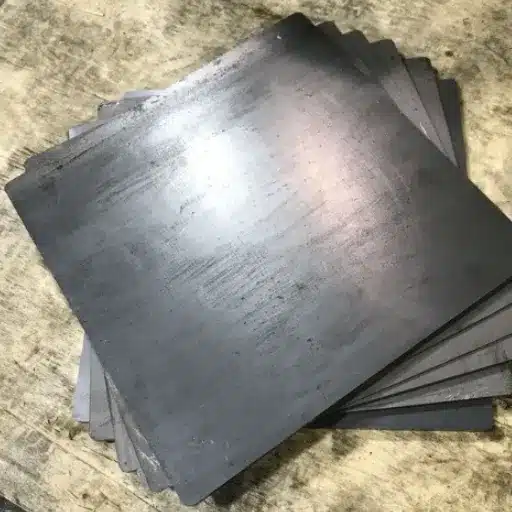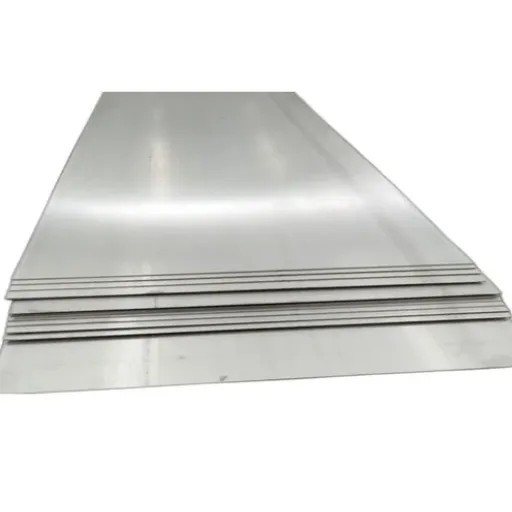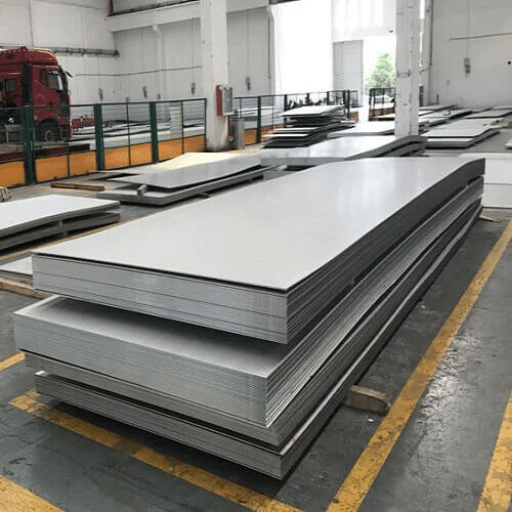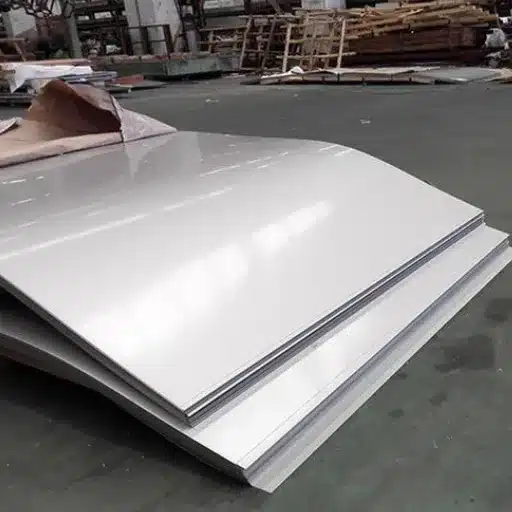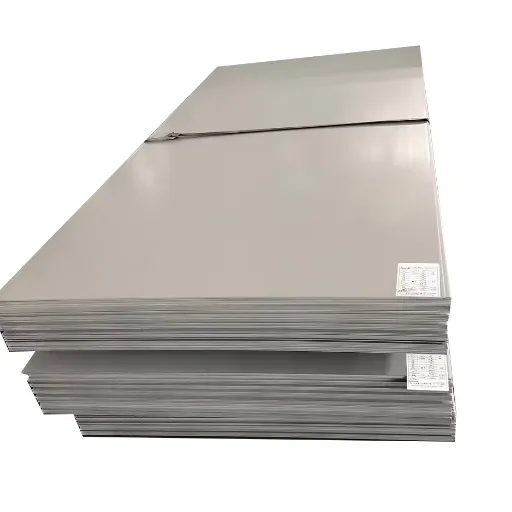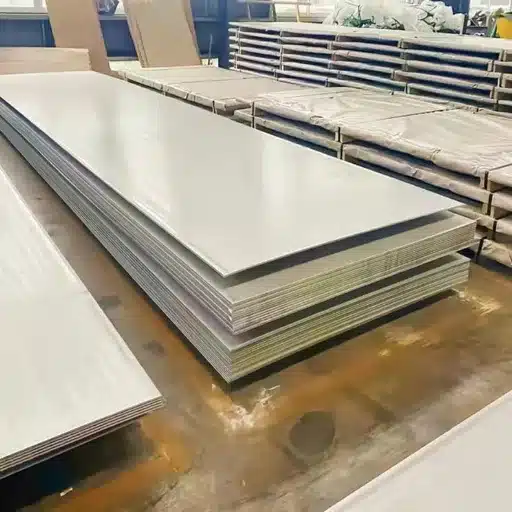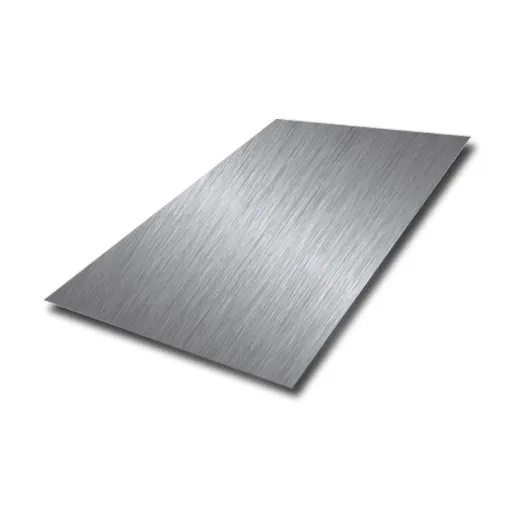Steel is one of the most adaptable and commonly used materials in the world, forming the backbone of a myriad of industries-from construction to fabrication. Among several types, mild steel is unique for being cheap, ductile, and strong. But have you ever stopped to wonder what happens to mild steel when subject to extreme heat? The melting points of metals, and particularly of mild steels, are subject to attention in industries and by engineers since the behavior of these materials changes depending on such temperatures during welding, forging, and heat treatment processes. This guide sets a wonderful backdrop on melting points of mild steel, its properties, importance, and comparison with other metals.
Understanding Mild Steel and Its Composition
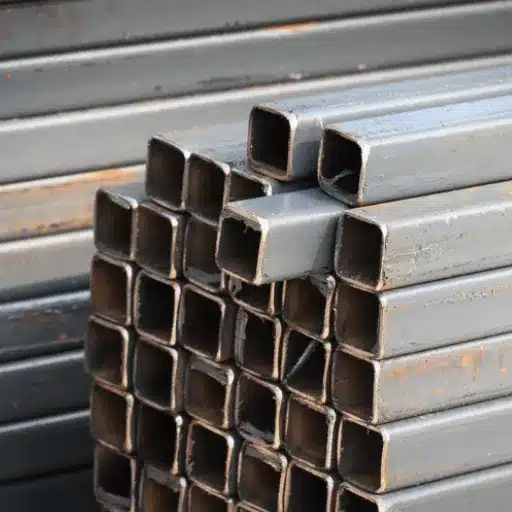
Definition and Properties of Mild Steel
Mild steel or low-carbon steel is a type of steel containing a relatively small amount of carbon, ranging typically from 0.05% to 0.25% by weight. This minimal carbon presence renders it easily workable and ductile, and weldable as compared to steels in higher carbon. Thanks to various uses, mild steel finds applications in fields such as construction, automotive, and metal fabrication.
Mild steel presents one of those scenarios where a fair balance of strength with flexibility exists in a material. While being not as hard and wear-resistant as high-carbon steels, mild steel, by virtue of its malleability, can undergo shaping and forming into varied structures without suffering cracking. It further provides adequate tensile strength for situations where moderate wear and the ability to bear stress are required.
For another significant property of mild steel, consider its cheap price and availability. Being cheap to produce, mild steel enjoys wide use and is available throughout the world in a great variety of industries. Yet, a low carbon content also means it does not resist corrosion well unless treated or coated. Still, mechanical properties and price determination make this metal suited for innumerable applications.
Comparison with Other Types of Steel
Among mild steel, stainless steel, maraging steel, alloy steel, and tool steel, melting point, carbon content, and application occur as main differentiating factors.
| Steel Type | Melting Pt. | Carbon % | Key Use | Alloying | Strength |
|---|---|---|---|---|---|
| Mild Steel | 1370-1530°C | 0.05-0.25 | Construction | Low | Moderate |
| Stainless | 1400-1450°C | 10.5-11 | Kitchenware | Chromium | High |
| Maraging | 1413°C | Low | Sports Equip. | Nickel | Very High |
| Alloy Steel | 1415-1432°C | 1-50 | Machinery | Various | High |
| Tool Steel | 1400-1425°C | 0.7-1.4 | Tools | Manganese | Very High |
Influence of Carbon Content on Melting Point
The carbon content of the steel affects the melting point by means of the structure and bond strength between the atoms. Generally, an increment in carbon content lowers the melting point of steel because carbide phases form which require less energy to attain the molten state.
- Steel with Low Carbon Content (Up to 0.3% Carbon): Melting point of between 1425 and 1540°C (2597–2800°F). Since the carbon is low, steels tend to retain a higher melting range which would be required for heat resistant applications.
- Steel with Medium Carbon Content (0.3 and 0.6 Carbon): Melting point between 1410 and 1430°C (2570–2606°F). Medium carbon will slightly reduce the melting point as compared to low carbon steel.
- Steel with High Carbon Content (0.6 and 1 Carbon): Melting point is typically about 1370–1400°C (2498–2552°F). Higher carbon causes a further dropening of the melting point due to the presence of cementite.
- Cast Iron (2%-4% Carbon): Melting point usually lies between 1140-1250°C (2084-2282°F). Being heavily enriched with carbon, the melting point is hence lowered drastically, choosing it well for casting.
These values truly confirm how increased carbon content relates to a decreased melting point of steel, key to utilizing it in various industries.
Melting Points of Different Metals: A Comparative Analysis
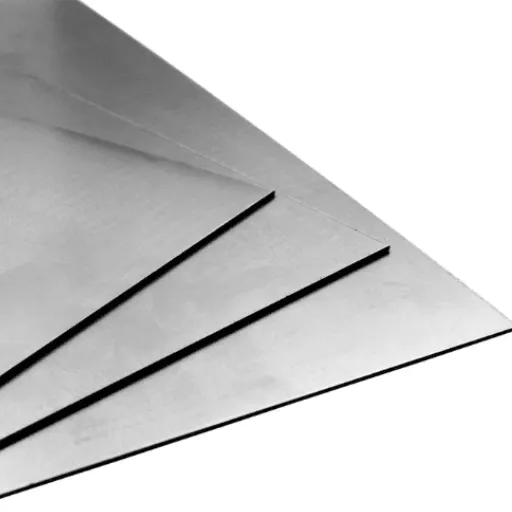
Comparison with Non-Ferrous Metals: Aluminium and Copper
Mild steel, aluminum, and copper differ in melting points, density, conductivity, and applications.
| Metal | Melting Pt. | Density | Conduct. | Key Use | Strength |
|---|---|---|---|---|---|
| Mild Steel | 1370-1530°C | 7.85 g/cm³ | Moderate | Construction | High |
| Aluminium | 660°C | 2.70 g/cm³ | High | Aerospace | Moderate |
| Copper | 1085°C | 8.96 g/cm³ | Very High | Electrical | Moderate |
Melting Points of Cast Iron and Its Implications
Given cast iron, yet another iron-carbon alloy with carbon content more than 2%, generally melting within the temperature range of 1150° to 1250°C. Such somewhat low melting temperature, compared to that of pure iron (1538°C), is because carbon and other elements present drastically alter the structure of the metal. This lower melting temperature range makes cast iron suitable for casting because it can be cast into complex shapes faster than it cools down to retain strength and durability. Its versatility and usability have made it a very popular material in many industries.
When deciding on a specific cast iron for a specific purpose, the melting point becomes a huge to be taken into consideration. For example, cast iron could resist the high-temperature operations in casting engine components like the cylinder head and block because of its melting point. Another advantage of cast iron is that it resists deformation while on a heat load; hence, it might be used for making cookware and machinery. Yet, while designing an object out of cast iron, issues like its brittle nature must be taken into account since there are times it may not accept heavy impacts or sudden temperature shocks.
Hence, changes in the composition, involving elements such as silicon or manganese, can either improve other properties or change the melting temperature to adapt to the application at hand. With further advances and stricter composition control, cast iron continues as a material of great versatility that stands between classical applications and current engineering issues. Its versatility speaks for the long-term importance it enjoys in manufacturing and industrial design.
Factors Influencing the Melting Point of Mild Steel
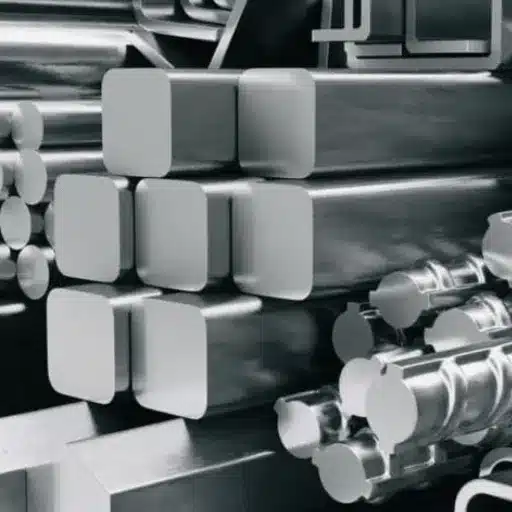
Effects of Alloying Elements
The melting point of mild steel truly depends upon the presence and amount of many different alloying elements. These elements alter its nature, thermal adjustments, and structural attributes of steel. Below are 5 kinds of major alloying elements and their effects:
Carbon
In mild steel, carbon is the most important alloying element, generally under 0.25% in concentration. With a slight reduction in the melting point as the level of carbon increases, the hardness and strength increase at the expense of ductility.
Manganese
Manganese has been added to provide additional tensile strength and toughness to steel. It also bestows durability by imparting resistance to the brittleness and sulfur, another deleterious factor in steel. Depending on the manganese content, there might be a slight influence in the melting temperature.
Silicon
Silicon is one of the deoxidizing agents employed during steel making. It has a small effect on the melting point but improves ferro-magnetic qualities in steels, while also increasing electrical resistivity.
Phosphorus
In little quantities, the phosphorus increases strength and maintains machinability; however, with increased quantities, it contributes to brittleness and the lowering of the melting point.
Chromium
Chromium is generally for corrosion resistance and keeping the steel lustrously hard. Slight increment in the melting point is another benefit of chromium, making the steel suitable for elevated temperature applications.
Each alloying element contributes to defining that specific property of mild steel so that engineers can design it for a wide array of uses.
Impact of Temperature and Pressure
Mild steel reflects a material of rather vast applications; the variations in temperature and pressure do significantly affect properties of mild steel, such as its structure, strength, and other performance, especially in critical applications. Below are the major effects and related data of temperature and pressure on mild steel for five distinct effects:
-
1
Thermal Expansion
With an increase in temperature, mild steel expands. The coefficient of thermal expansion of mild steel is about 12 × 10⁻⁶ per °C, implying the consideration of dimensional changes while the application involves a severe temperature variation.
-
2
Reduction of Yield Strength
An increase in temperature decreases the yield strength of a mild steel. For example, at 400°C, the yield strength of mild steel is reduced by nearly 40% compared with the value at room temperature.
-
3
Changes in Toughness
Ductility and toughness increase at high temperatures and they give mild steel resistance to brittle fracture. Conversely, at very low temperatures, the toughness reduces and the steel absorbs that energy, and as such it becomes brittle in the form of a mild steel brittle fracture, normally having occurred at temperatures lower than -20°C.
-
4
Creep Behavior
Under constant pressure and high temperatures, mild steel may undergo deformation by creep. Creep normally starts to cause considerable deformation when the temperature is greater than 300°C, telling upon the long-term structural integrity.
-
5
Hardness Variation with Pressure
Under high pressure, mild steel can show increased hardness and strength resulting from strain hardening or work hardening effects. Hence, for example, in high-pressure forming processes, high pressure will increase mild steel surface hardness appreciably.
This knowledge helps the engineers to come up with designs of components that go to resist extreme conditions to warrant safety and efficient applications on an industrial level.
Role of Microstructure in Melting Behavior
The melting behavior of materials, including mild steel, largely depends on their microstructure. Factors such as grain size, phase distribution, and impurities influence the material’s elevated-temperature behavior. The following is a generic list of the several microstructural factors considered and their impact on melting behavior:
Grain Size
Generally, smaller grains mean a higher melting temperature because more grain boundaries serve as impediments for the atomic movement during melting.
Phase Composition
Having more than one phase in the microstructure lowers the melting point as certain phases might melt at different temperatures, and partial melting begins before the bulk material transitions.
Impurity Levels
Impurities like sulphur or phosphorus lower the melting temperature to a great extent, as these substances either combine to form low melting compounds or they segregate at the grain boundaries.
Crystallographic Orientation
Regions along certain crystallographic orientations may melt earlier because the atomic packing density varies with orientation and affects the thermal stability.
Precipitates and Secondary Phases
Depending upon how they affect the primary matrix under heat treatment, precipitates and secondary phases such as carbides and nitrides can either raise or lower melting temperatures.
An understanding of these microstructural factors is crucial in tailoring the performance of mild steel and other materials for use at high temperatures. Advanced engineering methods for materials may themselves manipulate the microstructure to bring about desired melting behavior for certain specifications.
Practical Applications of Melting Point Data in Engineering
Implications for Welding and Forging Processes
Understanding the melting point data and microstructural characteristics of materials has significant implications for the welding and forging processes. These processes emphasize heat control concerning the quality of outcome without being detrimental to the integrity of the material. Five main points highlighting the importance of melting point data for these applications are as follows:
1
Heat Input Optimization
An engineer uses melting point data to make proper heat input selections for welds or forges. Enormous heat may lead to warping, cracks, drastic changes in microstructure, and so on. On the contrary, less heat will result in poor welding or poor deformation.
2
Finding Suitable Welding Methods
The welding method is selected depending on material melting points. Higher melting temperature materials may require a specialized method, such as TIG or laser welding, while materials with lower melting temperatures are produced by MIG welding.
3
Control of Thermal Gradients
Melting-point data is used for effectively controlling thermal gradients in the material, which is vital in averting issues such as residual stresses or distortion while the material cools down. This helps to ensure that the mechanical properties of the material are retained post-processing.
4
Preheating and PWHT
Considering melting temperature is a crucial step in determining levels of preheating and post-weld heat treatment. Low melting temperature material(s) might call for little preheating, whereas materials with high melting points mostly need controlled cooling to prevent microcracking.
5
Incompatibilities in Dissimilar Joining
By yielding information about materials’ melting points, compatibility through dissimilar materials welding or forging, incompatibilities leading to joint failure because of irregular melting, or thermal expansion mismatch, can be understood.
An engineer uses very detailed melting point data and manufactures knowledge about its interactions with other properties of the materials to design welding and forging processes that are most efficient, reliable, and high-performing for the particular application at hand.
Corrosion Resistance and Its Relation to Melting Point
Corrosion resistance is one of the properties needed for a particular material in domains where exposure to moisture in one way or the other, chemicals, or oxygen is a constant hazard. This property is related to atomic configuration and metallurgical features of the material, many of which are associated with the melting point of the material. Generally, if the melting point of a particular material is quite high such as tungsten or chromium, then such material would be very good in corrosion resistance because of their strong atomic bonds and tightly packed crystalline structure. These fine properties offer fewer entry points to corrosive agents, thereby prolonging the life span of the material when put to use under harsh environments.
Furthermore, alloys are often created for the enhancement of melting points as well as corrosion resistance for engineering materials. Chromium, in particular, confers on stainless steel the capacity to build upon the passive oxide film, thus rendering it immune to corrosion. Apart from slightly modifying melting points, this combination also increases the material’s ability to withstand corrosion. An understanding of the phenomenon requires exact data since a given value of melting point must be balanced against corrosion resistance for maximum usefulness in chosen fields such as marine, aerospace, and chemicals.
Advanced coatings and surface treatments present another area where the interplay of corrosion resistance and melting point is of prime importance. Modern technologies take from materials exhibiting high thermal properties and anti-corrosive characteristics in creating protective layers. Ceramic coatings with high melting points are given to turbine blades to shield them from oxidation and extreme temperatures. Combining such materials along with melting point data and corrosion resistance properties, engineers create innovative solutions for hostile applications where durability, safety, and efficiency are most paramount.
Ductility and Hardness Considerations in Metalworking
In metalworking, the selection of materials depends on the mechanical properties, chiefly ductility and hardness, that affect performance and procedure design. Ductility means that under tensile stress, a material is deformed considerably without fracture. Hence, it is considered a crucial property for metals intended to be drawn into wires, sheets, or fine details of general shapes. Hardness stands in contrast: it is the ability to resist deformation and can also resist scratching or penetration. It defines the wear resistance of a material and, therefore, its durability; hence, it is an essential property. These two properties are crucial to metalworking as the increase in one usually leads to a decrease in the other.
For instance, materials with a high degree of ductility are needed for making complex components with a lot of forming or shaping in high-performance industries like aerospace and automotive manufacturing. Simultaneously, an operating level of hardness must be retained or ensured so that these components can bear routine stresses and be durable. Titanium-aluminum intermetallic compounds, which are advanced alloys, are designed for such circumstances so that an appropriate level of ductility and hardness can be offered. Material scientists and engineers are therefore innovating materials utilizing processing techniques, such as heat treatments, work hardening, or the refinement of grain structures, to achieve said properties.
Ductility and hardness behavior can be accurately simulated under various loading conditions with modern computational tools. This helps engineers predict the performance of materials and design them accordingly to meet requirements specific to a building application. For instance, quantitative FEA data could be used to understand the stress-strain behavior of different material compositions, facilitating the design of components to comply with certain safety and efficiency criteria. In turn, metalworking professionals nowadays combine the theoretical aspects, empirical data, and cutting-edge tools to create possible applications for materials that are not only usable but also reliable under extreme environmental conditions.
Conclusion: Importance of Melting Point Knowledge in Materials Science
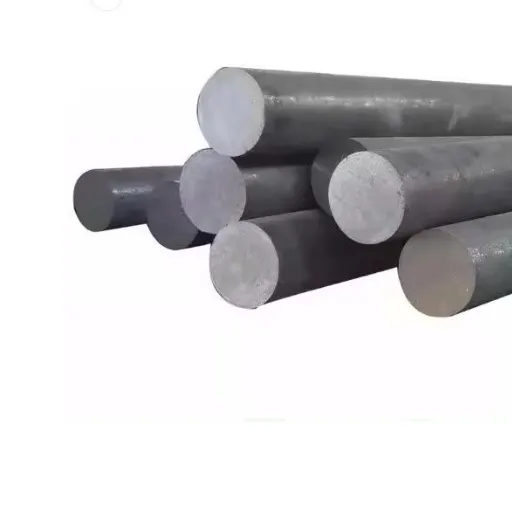
Summary of Key Points
Melting points of materials are of primary significance in various fields of materials manufacturing industries with direct emphasis on selection and subsequent applications process. Hence, working professionals are expected to predict the behavior of a material under certain thermal conditions on the ground that their behavior will not serve against or compromise operational integrity. It becomes, therefore, a highly consequential leg of engineering procedures, wherein materials subjected to extra-ordinary temperatures present their availability.
With melting behavior considerations, a lot can be done to enlarge knowledge of food properties and their reaction to thermal stresses. This type of information is useful in the formulation of alloys, composites, and components that must work appropriately under difficult conditions. Theoretical knowledge combined with modern apparatus and empirical evidence aids innovation through making sure that the final product is ever more dependable in extreme environments.
In other words, the knowledge of melting points and how to utilize it is the basis of engineering and manufacturing standards. Thus, a safe working environment is designed, productive systems are developed, and within safety parameters, materials are selected by most stringent criteria in quality and reliability.
Future Research Directions in Steel Melting Points
🔬 Advanced Alloy Development
In my views, potential research could focus on developing alloys with low or varying melting points but given strength and durability. Untold applications can emerge in those industries requiring precise melting and reshaping of steel. By varying alloying elements and manufacturing methods, we can begin the process of innovating on materials that accommodate contemporary engineering while still being cost-effective.
🌡️ Extreme Conditions Research
Further research could also perhaps consider the behavior of steel under extreme kinds of circumstances like pressure or sudden and rapid temperature changes. Depending on their melting points, steels and their alloys behave differently in these circumstances: such knowledge could open up new avenues for materials used in aerospace, nuclear, and deep-sea explorations so that industries can be assured of having steels made to specification for harsh and volatile environments.
🤖 Computational Modeling & AI
Lastly, a wider adoption of algorithms for machine learning and computational modeling would surely spur bigger accomplishments in this metric. Information about melting point changes due to alloy compositions or behavioral changes of alloys under stress can guide the research process with the accuracy its own. Therefore, I consider that the incorporation of these higher-end techniques will greatly account for the advancement of the cutting-edge investigation into the melting property of steel and will have an equally strong impact on innovations in materials science.
References
-
University of Illinois – Steel in Ancient Greece and Rome
This source discusses the melting point of pure iron and its historical context. -
University of Iowa – Period #5 Notes: Making Steel and Its Chemical Composition
This document provides insights into the chemical composition and melting behavior of steel. -
Open University – Soldering
While focused on soldering, this source discusses melting points in the context of metalworking. -
University of Pennsylvania – Machinability
This document includes information on the properties of mild steel, including its machinability and melting characteristics. -
PubMed Central – Structure–Property Correlation and Constitutive Behavior of Steels
This academic review investigates the mechanical behavior of structural steels, which may include melting point data. - Click here to read more.
Frequently Asked Questions (FAQ)
Q: What is prevalent for mild steel melting point?
A: A range of about 1425 to 1540 degrees Celsius (2600 to 2800 degrees Fahrenheit) is given as the melting point for mild steel. This temperature range varies with the precise alloying percentages, most notably with carbon.
Q: In what manner does variation in carbon content change the melting point of mild steel?
A: Variability in carbon content affects the melting point of mild steel. With less carbon, mild steel has a relatively higher melting point than does high carbon steel. Higher melting points are obtained with the increase of carbon content, which is of great importance in cases where higher heat resistance is required.
Q: What is the importance of the melting point of mild steel in construction and manufacturing?
A: Because of its melting point, mild steel is one of the most suitable building and industrial-action steels, able to withstand temperatures well above the usual threshold levels without getting deformed. This is quite significant in the industries where the materials form an integral part of the performance specification of the product, like in the automotive and aerospace industries.
Q: What about mild steel’s melting point compared to other metals?
A: The melting point of mild steel generally exceeds that of many metals but lies somehow below the melting point of high carbon steel. To explain further, while mild steel melts at approximately between 1425 and 1540 degrees Celsius, the melting point of aluminum only lies at around 660 degrees Celsius-the steel is generally more heat resistant.
Q: What is the yield point of mild steel in connection with the melting point?
A: The yield point of mild steel is the stress value wherein the steel begins deformation plastically. While the melting point gives the temperature at which mild steel becomes a liquid from the solid form, yield point is that parameter which decides the load acting upon steel before deformation occurs.
Q: Can mild steel constitute other elements, and how do they influence its properties?
A: Yes. Mild steel may contain other elements, which can change its properties, including melting point. Addition of elements like manganese or silicon could make it better in terms of thermal conductivity or strength for different applications.
Q: What are the uses that are common for mild steel considering its melting point?
A: When considers melting point and properties, construction and manufacturing are typical domains of application of mild steel. Usage is for building structures, automotive components, and machinery where strength and workability are balanced.
Q: How do temperature changes affect the melting point of mild steel?
A: Temperature changes can affect the melting point of mild steel. At lower temperatures, the alloy remains as long as the solid state, but with rising temperatures nearing the melting point, the structure starts to get weak. A knowledge of this thermal behavior is important in welding and casting processes.
Q: What is the thermal conductivity of mild steel?
A: Mild steel finds the level of thermal conductivity to be high and is thereby able to conduct heat well. The material is then considered a good choice where heat dissipation calls for attention together with its melting point, such as the automotive and aerospace industries.

